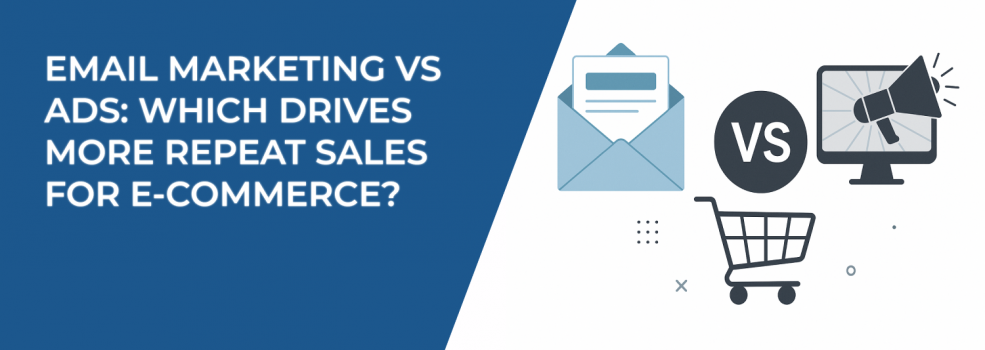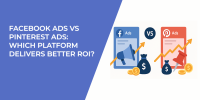Every e-commerce owner wants the same thing — customers who keep coming back. Repeat sales are cheaper, more profitable, and they build loyalty that lasts. But the big question is: do you get more repeat business from email marketing or from paid ads?
The truth is, both channels are powerful. They work in different ways, and when you use them together, you create a growth engine that’s hard to beat.
Why Repeat Sales Are So Valuable
Winning new customers takes money, effort, and patience. You have to advertise, compete for attention, and convince people to trust your brand. Once someone has already bought from you, though, everything changes.
Returning customers cost less to reach, convert faster, and often spend more. Even a small increase in repeat purchases can create a big jump in profits. That’s why choosing the right tools to bring shoppers back is critical.
Email Marketing: The Power of Direct Connection
Email is still one of the strongest ways to build repeat sales. It doesn’t depend on algorithms or ad auctions — you control the channel and the relationship.
Here’s why email stands out:
-
It’s affordable: One campaign can bring in thousands of dollars with very little cost.
-
It’s personal: You can send tailored messages based on what customers bought or browsed.
-
It’s automated: Set up sequences once, and they’ll keep nudging customers back without extra work.
What this means is that email can quietly work in the background while you focus on other areas of your business. It provides consistency, and consistency builds trust — which is the foundation of loyalty.
Example: If you run a skincare shop and a customer buys a moisturizer, you can send an email a week later recommending a matching cleanser. A month later, a reorder reminder arrives. These little nudges feel helpful, not pushy, and keep your brand top of mind.
Want to make emails even more effective? Pair them with smart segmentation. Here’s a practical guide on how to define your target audience so that every message feels relevant.
Paid Ads: Speed and Reach at Scale
Paid ads play a different role. They give you visibility beyond the inbox and allow you to reach customers who might never open your emails.
Why ads matter for repeat sales:
-
They’re fast: Launch an ad today and you can see sales tomorrow.
-
They’re targeted: Retarget visitors who looked at a product but didn’t buy.
-
They’re scalable: With the right budget, you can reach as many people as you need.
The real benefit of ads is agility. You can test, adjust, and quickly respond to market changes. This makes ads an excellent tool when you need to boost sales in the short term, or when you want to reach buyers outside your email list.
Example: Say you sell fitness gear. A customer buys resistance bands. Later, while scrolling Instagram, they see an ad for your yoga mat or training guide. The timing feels natural, and it inspires another purchase.
To really make paid ads work, you need sharp targeting. Check out this breakdown of Facebook Ad Targeting 101 to learn how to reach the right buyers at the right time. And if you’re struggling with campaigns that don’t perform, you might want to read about why Facebook ads fail.
Email vs Ads — Which One Wins?
If you look at cost-effectiveness, email often wins. If you look at speed and reach, ads take the crown. But in reality, the question isn’t about one channel beating the other.
Smart e-commerce businesses use both. Email nurtures loyalty over time. Ads keep your brand visible and relevant when customers are online. Together, they cover both the personal and the public side of the shopping experience.
For example, you might run a retargeting campaign on Facebook while also sending a follow-up email sequence. That way, customers see you in their inbox and in their feeds — a powerful combination that boosts conversion rates.
How to Use Both Channels Together
The real magic happens when you blend email and ads into one strategy:
-
Send emails for reorder reminders, loyalty rewards, or personalized product bundles.
-
Run ads for customers who haven’t engaged with your emails recently, or to highlight a new collection.
-
Build coordinated campaigns where your emails and ads share the same design or theme, so customers see a consistent message wherever they look.
When you combine the two, you close the gaps. Email builds the relationship over time, while ads capture attention at just the right moments. That combination keeps your customers engaged and encourages repeat purchases far more effectively than either channel alone.
Final Thoughts
Repeat customers are the key to long-term growth. Email marketing gives you direct communication, while paid ads give you speed and reach.
The smartest move is using both — email to build trust and loyalty, and ads to stay visible in competitive spaces. Together, they turn first-time buyers into loyal fans who come back again and again.

